A Basic OB Model Individual Level •

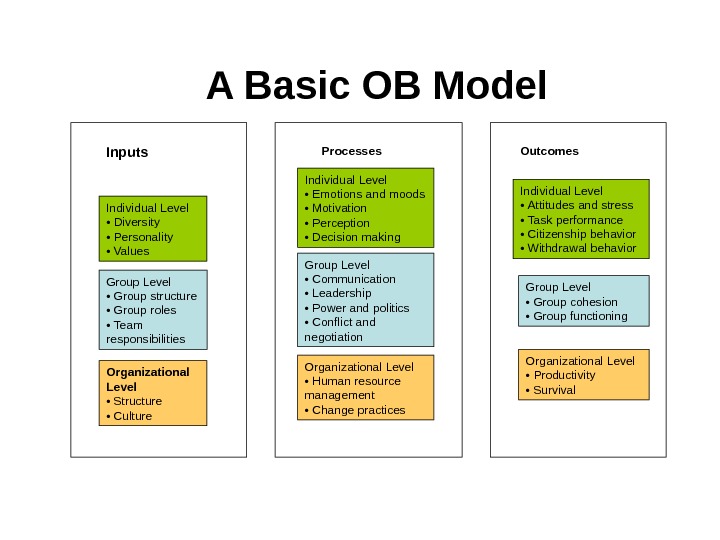
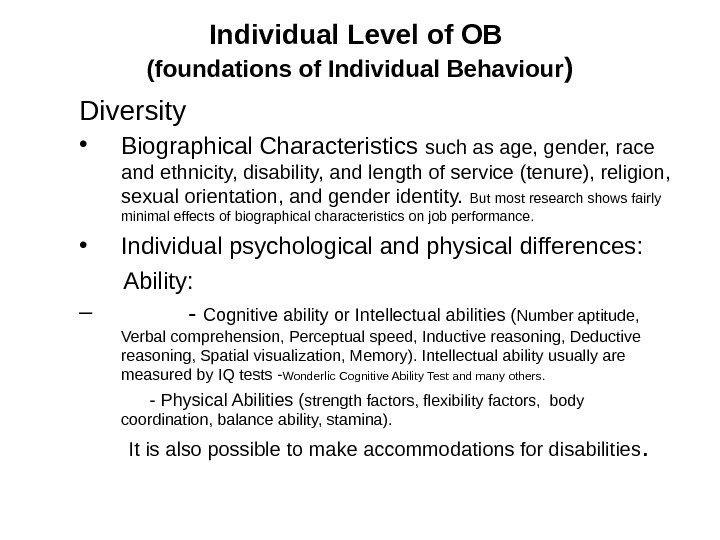
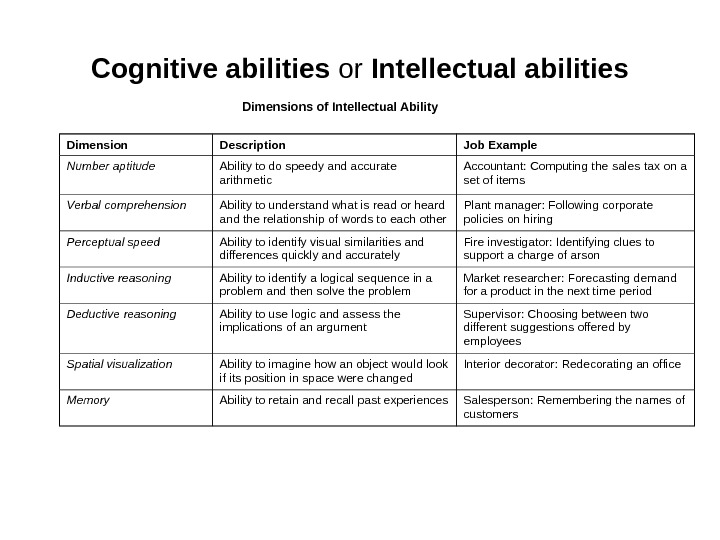
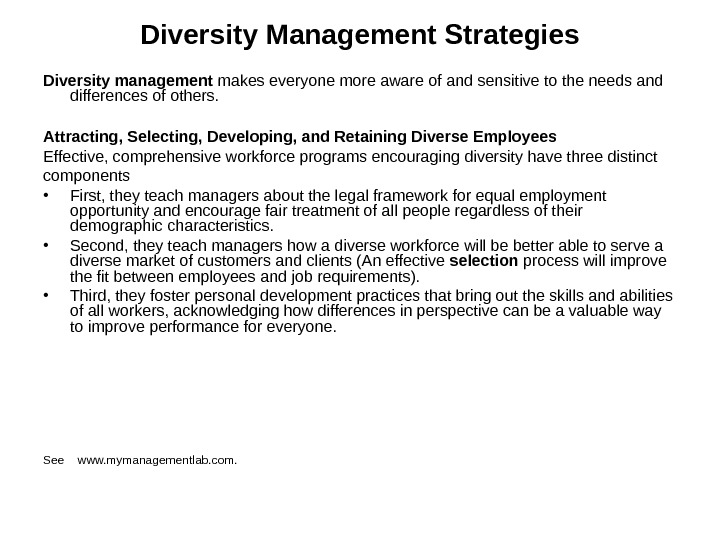

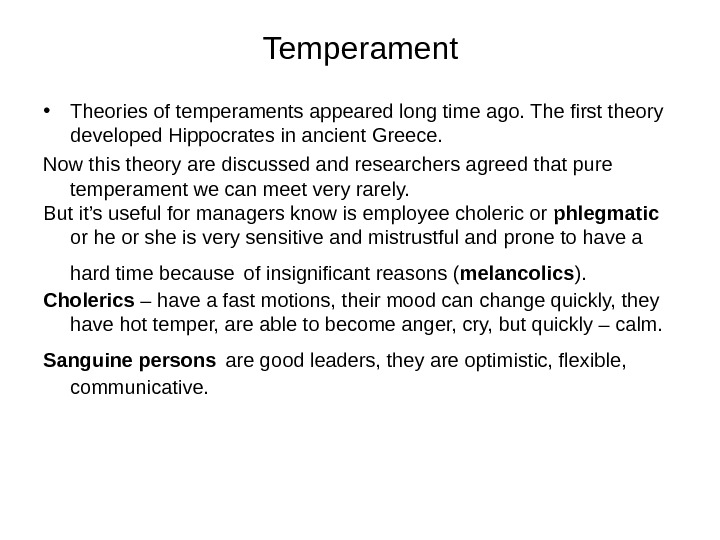
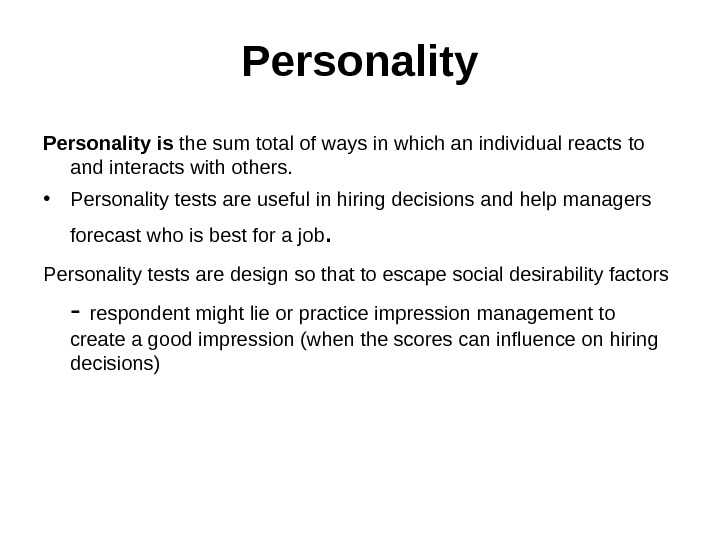
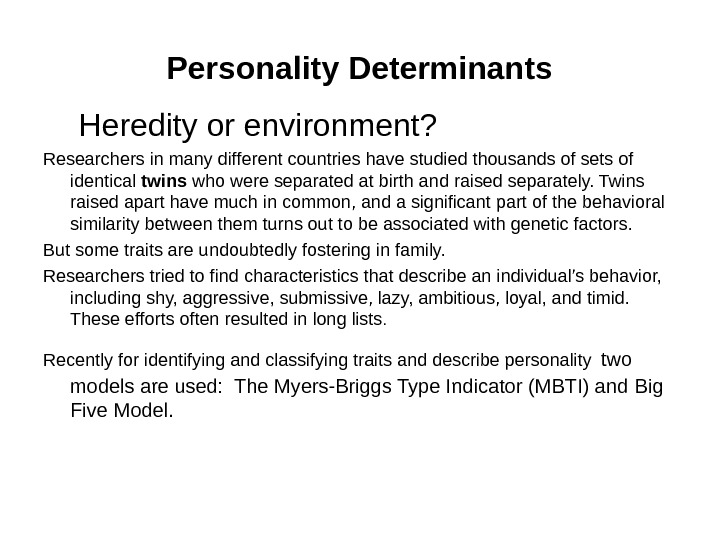

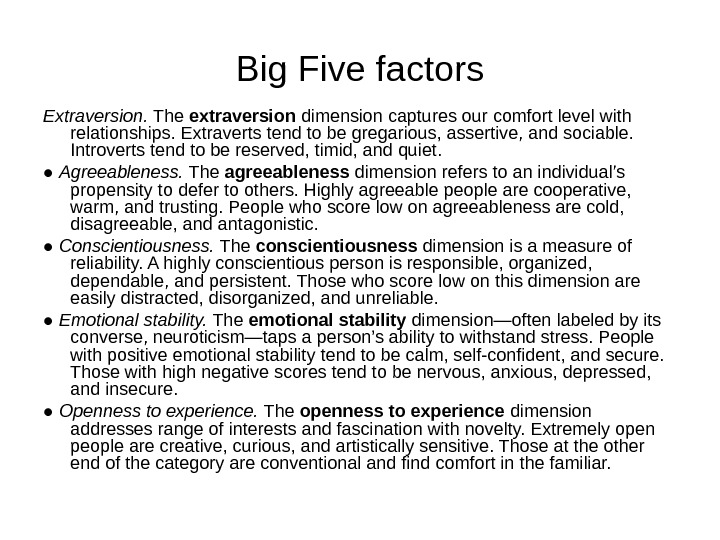
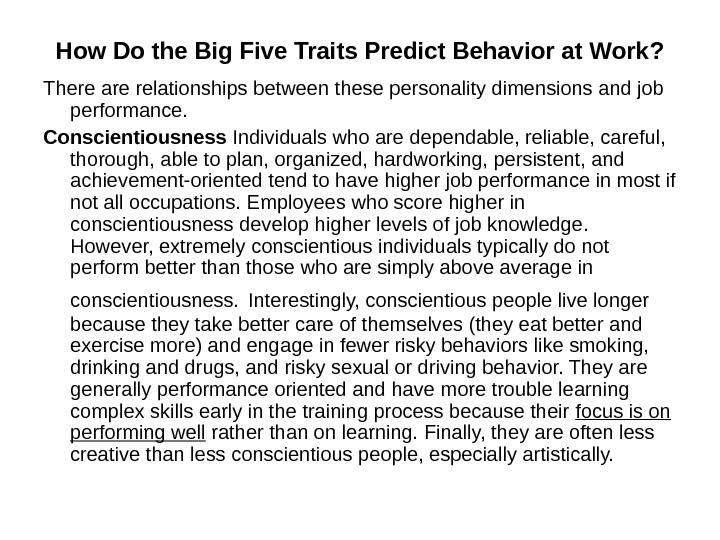

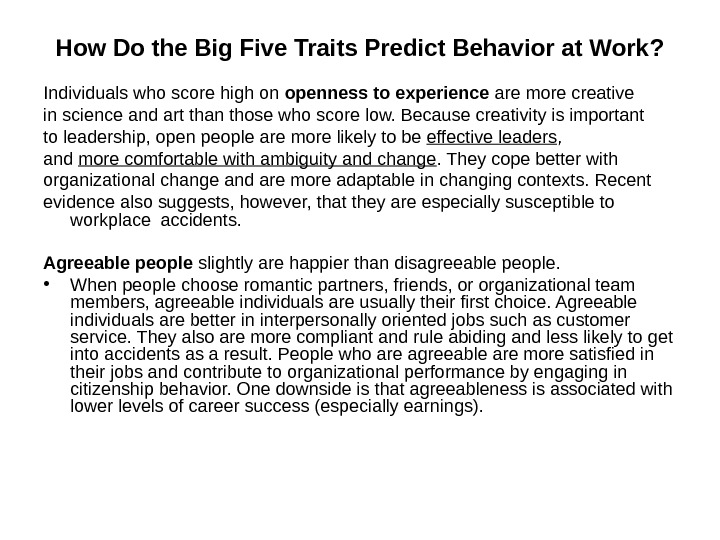
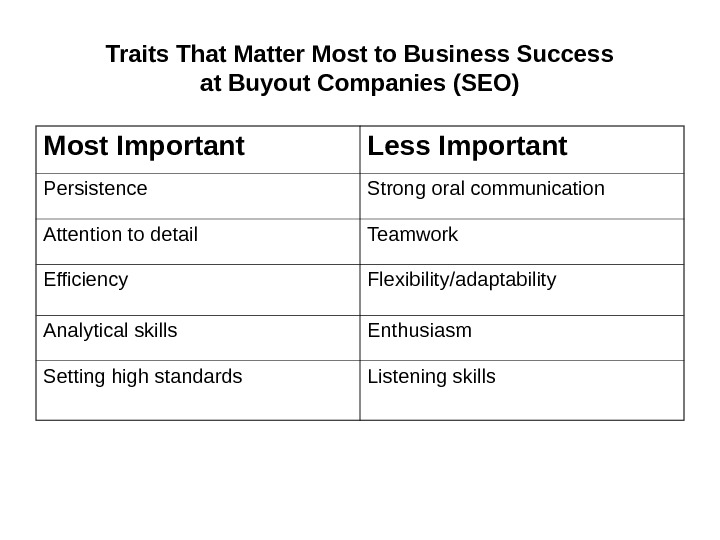

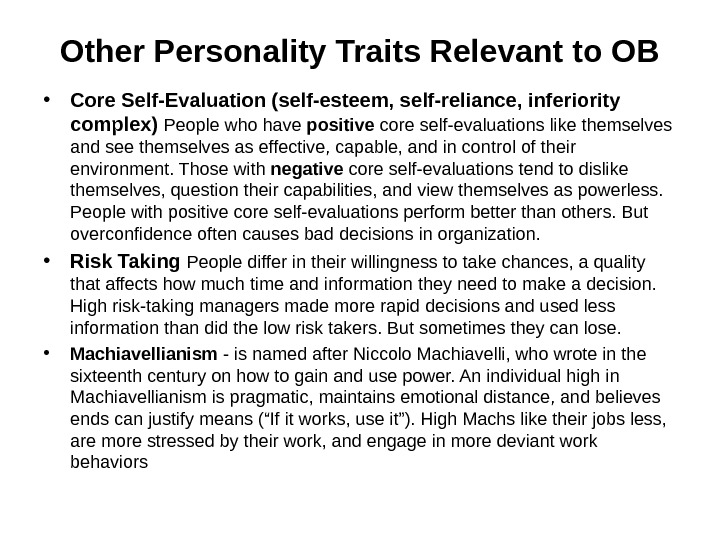
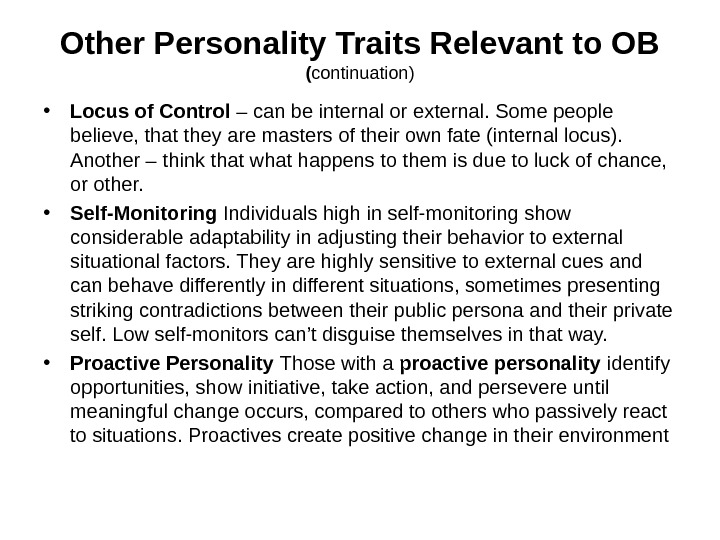
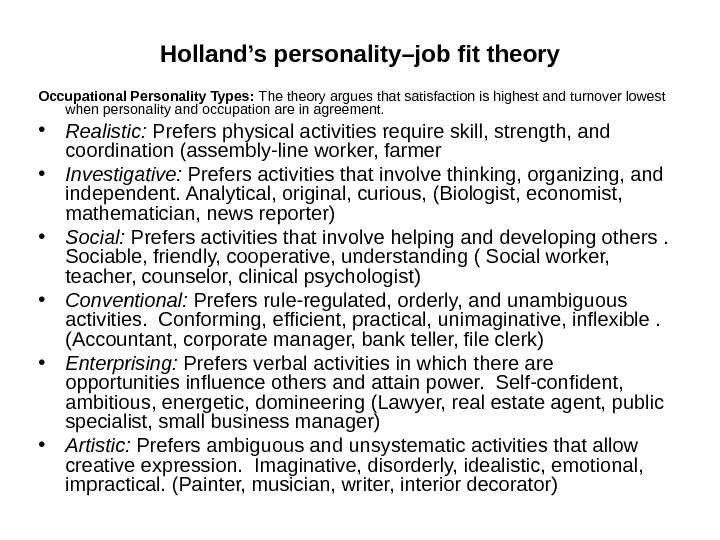

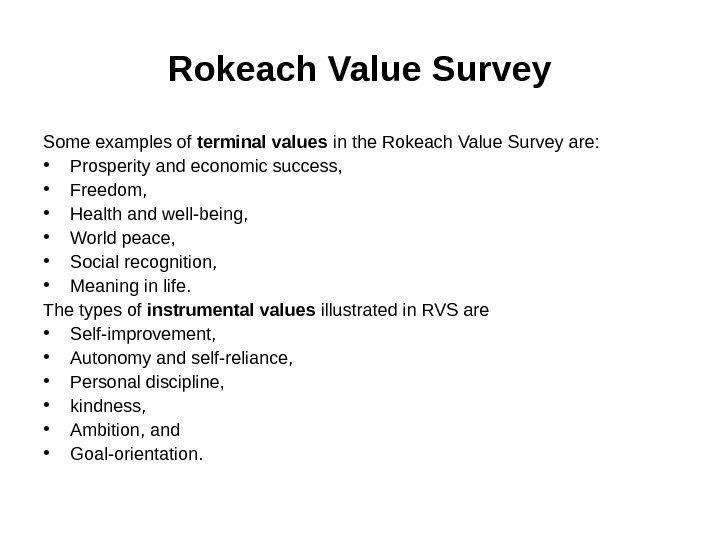
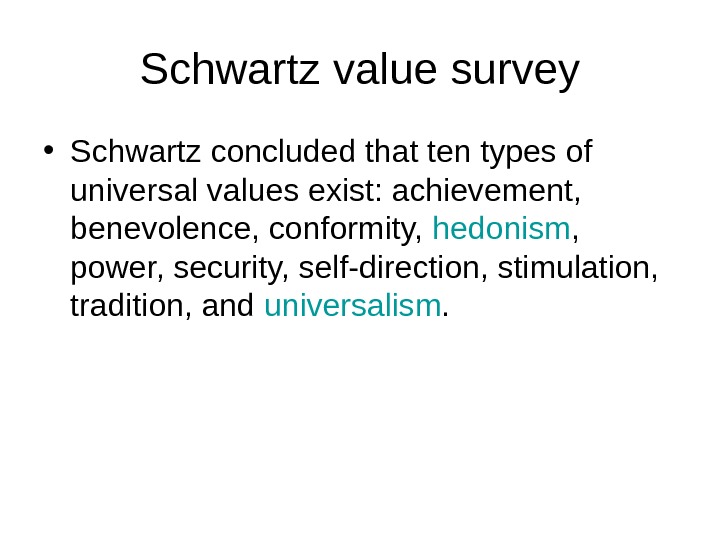
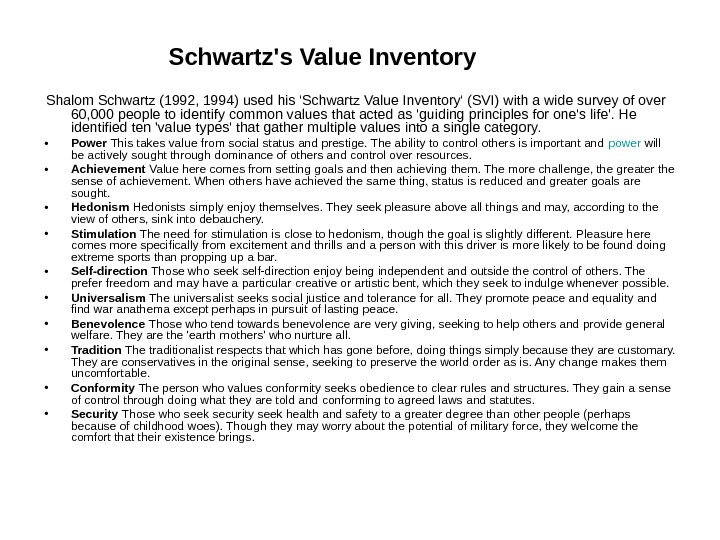
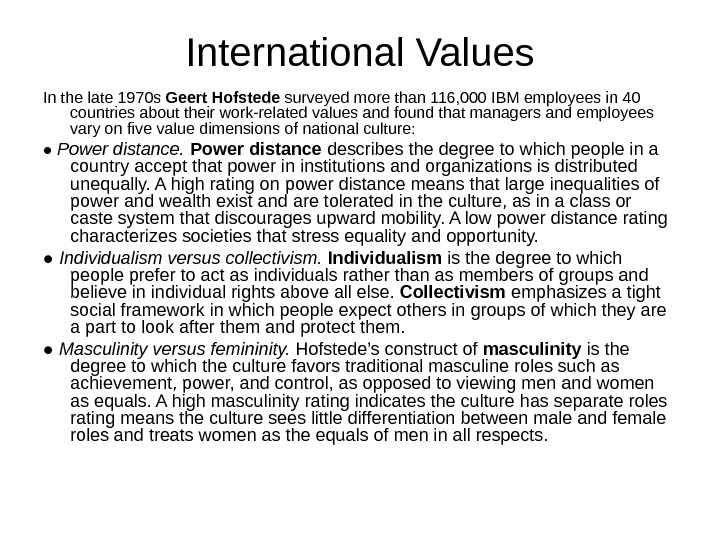
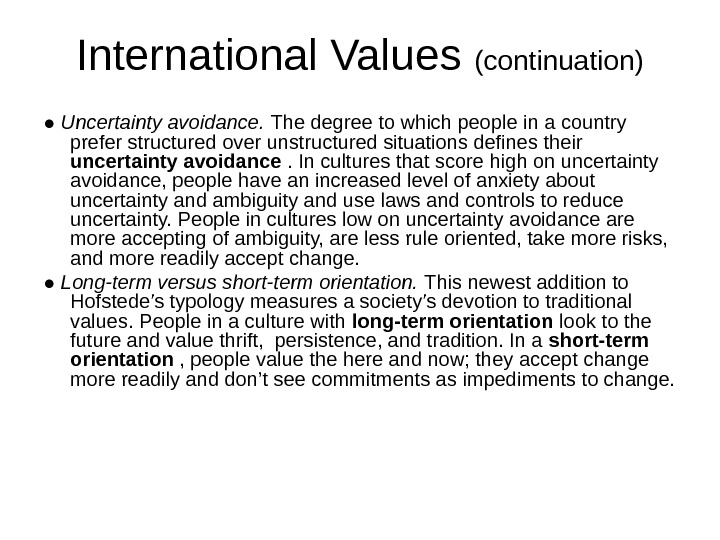
- Размер: 129.5 Кб
- Количество слайдов: 24
Описание презентации A Basic OB Model Individual Level • по слайдам
 A Basic OB Model Individual Level • Diversity • Personality • Values Group Level • Group structure • Group roles • Team responsibilities. Inputs Organizational Level • Structure • Culture Individual Level • Emotions and moods • Motivation • Perception • Decision making Group Level • Communication • Leadership • Power and politics • Conflict and negotiation Organizational Level • Human resource management • Change practices Processes Outcomes Individual Level • Attitudes and stress • Task performance • Citizenship behavior • Withdrawal behavior Group Level • Group cohesion • Group functioning Organizational Level • Productivity • Survival
A Basic OB Model Individual Level • Diversity • Personality • Values Group Level • Group structure • Group roles • Team responsibilities. Inputs Organizational Level • Structure • Culture Individual Level • Emotions and moods • Motivation • Perception • Decision making Group Level • Communication • Leadership • Power and politics • Conflict and negotiation Organizational Level • Human resource management • Change practices Processes Outcomes Individual Level • Attitudes and stress • Task performance • Citizenship behavior • Withdrawal behavior Group Level • Group cohesion • Group functioning Organizational Level • Productivity • Survival
 Individual Level of OB (foundations of Individual Behaviour ) Diversity • Biographical Characteristics such as age, gender, race and ethnicity, disability, and length of service (tenure), religion, sexual orientation, and gender identity. But most research shows fairly minimal effects of biographical characteristics on job performance. • Individual psychological and physical differences: Ability: – — Cognitive ability or Intellectual abilities ( Number aptitude, Verbal comprehension, Perceptual speed, Inductive reasoning, Deductive reasoning, Spatial visualization, Memory). Intellectual ability usually are measured by IQ tests — Wonderlic Cognitive Ability Test and many others. — Physical Abilities ( strength factors, flexibility factors, body coordination, balance ability, stamina). It is also possible to make accommodations for disabilities.
Individual Level of OB (foundations of Individual Behaviour ) Diversity • Biographical Characteristics such as age, gender, race and ethnicity, disability, and length of service (tenure), religion, sexual orientation, and gender identity. But most research shows fairly minimal effects of biographical characteristics on job performance. • Individual psychological and physical differences: Ability: – — Cognitive ability or Intellectual abilities ( Number aptitude, Verbal comprehension, Perceptual speed, Inductive reasoning, Deductive reasoning, Spatial visualization, Memory). Intellectual ability usually are measured by IQ tests — Wonderlic Cognitive Ability Test and many others. — Physical Abilities ( strength factors, flexibility factors, body coordination, balance ability, stamina). It is also possible to make accommodations for disabilities.
 Cognitive abilities or Intellectual abilities Dimensions of Intellectual Ability Dimension Description Job Example Number aptitude Ability to do speedy and accurate arithmetic Accountant: Computing the sales tax on a set of items Verbal comprehension Ability to understand what is read or heard and the relationship of words to each other Plant manager: Following corporate policies on hiring Perceptual speed Ability to identify visual similarities and differences quickly and accurately Fire investigator: Identifying clues to support a charge of arson Inductive reasoning Ability to identify a logical sequence in a problem and then solve the problem Market researcher: Forecasting demand for a product in the next time period Deductive reasoning Ability to use logic and assess the implications of an argument Supervisor: Choosing between two different suggestions offered by employees Spatial visualization Ability to imagine how an object would look if its position in space were changed Interior decorator: Redecorating an office Memory Ability to retain and recall past experiences Salesperson: Remembering the names of customers
Cognitive abilities or Intellectual abilities Dimensions of Intellectual Ability Dimension Description Job Example Number aptitude Ability to do speedy and accurate arithmetic Accountant: Computing the sales tax on a set of items Verbal comprehension Ability to understand what is read or heard and the relationship of words to each other Plant manager: Following corporate policies on hiring Perceptual speed Ability to identify visual similarities and differences quickly and accurately Fire investigator: Identifying clues to support a charge of arson Inductive reasoning Ability to identify a logical sequence in a problem and then solve the problem Market researcher: Forecasting demand for a product in the next time period Deductive reasoning Ability to use logic and assess the implications of an argument Supervisor: Choosing between two different suggestions offered by employees Spatial visualization Ability to imagine how an object would look if its position in space were changed Interior decorator: Redecorating an office Memory Ability to retain and recall past experiences Salesperson: Remembering the names of customers
 Diversity Management Strategies Diversity management makes everyone more aware of and sensitive to the needs and differences of others. Attracting, Selecting, Developing, and Retaining Diverse Employees Effective, comprehensive workforce programs encouraging diversity have three distinct components • First, they teach managers about the legal framework for equal employment opportunity and encourage fair treatment of all people regardless of their demographic characteristics. • Second, they teach managers how a diverse workforce will be better able to serve a diverse market of customers and clients (An effective selection process will improve the fit between employees and job requirements). • Third, they foster personal development practices that bring out the skills and abilities of all workers, acknowledging how differences in perspective can be a valuable way to improve performance for everyone. See www. mymanagementlab. com.
Diversity Management Strategies Diversity management makes everyone more aware of and sensitive to the needs and differences of others. Attracting, Selecting, Developing, and Retaining Diverse Employees Effective, comprehensive workforce programs encouraging diversity have three distinct components • First, they teach managers about the legal framework for equal employment opportunity and encourage fair treatment of all people regardless of their demographic characteristics. • Second, they teach managers how a diverse workforce will be better able to serve a diverse market of customers and clients (An effective selection process will improve the fit between employees and job requirements). • Third, they foster personal development practices that bring out the skills and abilities of all workers, acknowledging how differences in perspective can be a valuable way to improve performance for everyone. See www. mymanagementlab. com.
 Individual Behavior’s Reasons • Heredity (genes) • Type of nervous system • Temperaments • Type of personality and personality traits • Environment • Upbringing in family • Education • Motivation • Emotions • Values • Attitudes • Unconsciousness’ processes (impulses, psychological defenses, experiences, etc) • Self-image (self-esteem, self-reliance or inferiority complex)
Individual Behavior’s Reasons • Heredity (genes) • Type of nervous system • Temperaments • Type of personality and personality traits • Environment • Upbringing in family • Education • Motivation • Emotions • Values • Attitudes • Unconsciousness’ processes (impulses, psychological defenses, experiences, etc) • Self-image (self-esteem, self-reliance or inferiority complex)
 Temperament • Theories of temperaments appeared long time ago. The first theory developed Hippocrates in ancient Greece. Now this theory are discussed and researchers agreed that pure temperament we can meet very rarely. But it’s useful for managers know is employee choleric or phlegmatic or he or she is very sensitive and mistrustful and prone to have a hard time because of insignificant reasons ( melancolics ). Cholerics – have a fast motions, their mood can change quickly, they have hot temper, are able to become anger, cry, but quickly – calm. Sanguine persons are good leaders, they are optimistic, flexible, communicative.
Temperament • Theories of temperaments appeared long time ago. The first theory developed Hippocrates in ancient Greece. Now this theory are discussed and researchers agreed that pure temperament we can meet very rarely. But it’s useful for managers know is employee choleric or phlegmatic or he or she is very sensitive and mistrustful and prone to have a hard time because of insignificant reasons ( melancolics ). Cholerics – have a fast motions, their mood can change quickly, they have hot temper, are able to become anger, cry, but quickly – calm. Sanguine persons are good leaders, they are optimistic, flexible, communicative.
 Personality P ersonality is the sum total of ways in which an individual reacts to and interacts with others. • Personality tests are useful in hiring decisions and help managers forecast who is best for a job. Personality tests are design so that to escape social desirability factors — respondent might lie or practice impression management to create a good impression (when the scores can influence on hiring decisions)
Personality P ersonality is the sum total of ways in which an individual reacts to and interacts with others. • Personality tests are useful in hiring decisions and help managers forecast who is best for a job. Personality tests are design so that to escape social desirability factors — respondent might lie or practice impression management to create a good impression (when the scores can influence on hiring decisions)
 Personality Determinants Heredity or environment? Researchers in many different countries have studied thousands of sets of identical twins who were separated at birth and raised separately. Twins raised apart have much in common, and a significant part of the behavioral similarity between them turns out to be associated with genetic factors. But some traits are undoubtedly fostering in family. Researchers tried to find characteristics that describe an individual’s behavior, including shy, aggressive, submissive, lazy, ambitious, loyal, and timid. These efforts often resulted in long lists. Recently for identifying and classifying traits and describe personality two models are used: The Myers-Briggs Type Indicator (MBTI) and Big Five Model.
Personality Determinants Heredity or environment? Researchers in many different countries have studied thousands of sets of identical twins who were separated at birth and raised separately. Twins raised apart have much in common, and a significant part of the behavioral similarity between them turns out to be associated with genetic factors. But some traits are undoubtedly fostering in family. Researchers tried to find characteristics that describe an individual’s behavior, including shy, aggressive, submissive, lazy, ambitious, loyal, and timid. These efforts often resulted in long lists. Recently for identifying and classifying traits and describe personality two models are used: The Myers-Briggs Type Indicator (MBTI) and Big Five Model.
 Big Five Model of Personality Big Five Model clams that five basic dimensions underlie all others and encompass most of the significant variation in human personality. Test scores of these traits can predict how people behave in a variety of real-life situations. Big Five factors: ● Extraversion. ● Agreeableness. ● Conscientiousness. ● Emotional stability. ● Openness to experience.
Big Five Model of Personality Big Five Model clams that five basic dimensions underlie all others and encompass most of the significant variation in human personality. Test scores of these traits can predict how people behave in a variety of real-life situations. Big Five factors: ● Extraversion. ● Agreeableness. ● Conscientiousness. ● Emotional stability. ● Openness to experience.
 Big Five factors Extraversion. The extraversion dimension captures our comfort level with relationships. Extraverts tend to be gregarious, assertive, and sociable. Introverts tend to be reserved, timid, and quiet. ● Agreeableness. The agreeableness dimension refers to an individual’s propensity to defer to others. Highly agreeable people are cooperative, warm, and trusting. People who score low on agreeableness are cold, disagreeable, and antagonistic. ● Conscientiousness. The conscientiousness dimension is a measure of reliability. A highly conscientious person is responsible, organized, dependable, and persistent. Those who score low on this dimension are easily distracted, disorganized, and unreliable. ● Emotional stability. The emotional stability dimension—often labeled by its converse, neuroticism—taps a person’s ability to withstand stress. People with positive emotional stability tend to be calm, self-confident, and secure. Those with high negative scores tend to be nervous, anxious, depressed, and insecure. ● Openness to experience. The openness to experience dimension addresses range of interests and fascination with novelty. Extremely open people are creative, curious, and artistically sensitive. Those at the other end of the category are conventional and find comfort in the familiar.
Big Five factors Extraversion. The extraversion dimension captures our comfort level with relationships. Extraverts tend to be gregarious, assertive, and sociable. Introverts tend to be reserved, timid, and quiet. ● Agreeableness. The agreeableness dimension refers to an individual’s propensity to defer to others. Highly agreeable people are cooperative, warm, and trusting. People who score low on agreeableness are cold, disagreeable, and antagonistic. ● Conscientiousness. The conscientiousness dimension is a measure of reliability. A highly conscientious person is responsible, organized, dependable, and persistent. Those who score low on this dimension are easily distracted, disorganized, and unreliable. ● Emotional stability. The emotional stability dimension—often labeled by its converse, neuroticism—taps a person’s ability to withstand stress. People with positive emotional stability tend to be calm, self-confident, and secure. Those with high negative scores tend to be nervous, anxious, depressed, and insecure. ● Openness to experience. The openness to experience dimension addresses range of interests and fascination with novelty. Extremely open people are creative, curious, and artistically sensitive. Those at the other end of the category are conventional and find comfort in the familiar.
 How Do the Big Five Traits Predict Behavior at Work ? There are relationships between these personality dimensions and job performance. Conscientiousness Individuals who are dependable, reliable, careful, thorough, able to plan, organized, hardworking, persistent, and achievement-oriented tend to have higher job performance in most if not all occupations. Employees who score higher in conscientiousness develop higher levels of job knowledge. However, extremely conscientious individuals typically do not perform better than those who are simply above average in conscientiousness. Interestingly, conscientious people live longer because they take better care of themselves (they eat better and exercise more) and engage in fewer risky behaviors like smoking, drinking and drugs, and risky sexual or driving behavior. They are generally performance oriented and have more trouble learning complex skills early in the training process because their focus is on performing well rather than on learning. Finally, they are often less creative than less conscientious people, especially artistically.
How Do the Big Five Traits Predict Behavior at Work ? There are relationships between these personality dimensions and job performance. Conscientiousness Individuals who are dependable, reliable, careful, thorough, able to plan, organized, hardworking, persistent, and achievement-oriented tend to have higher job performance in most if not all occupations. Employees who score higher in conscientiousness develop higher levels of job knowledge. However, extremely conscientious individuals typically do not perform better than those who are simply above average in conscientiousness. Interestingly, conscientious people live longer because they take better care of themselves (they eat better and exercise more) and engage in fewer risky behaviors like smoking, drinking and drugs, and risky sexual or driving behavior. They are generally performance oriented and have more trouble learning complex skills early in the training process because their focus is on performing well rather than on learning. Finally, they are often less creative than less conscientious people, especially artistically.
 How Do the Big Five Traits Predict Behavior at Work ? • Emotional stability is most strongly related to life satisfaction, job satisfaction, and low stress levels. Individuals with high scores are positive and optimistic and experience fewer negative emotions. People low on emotional stability are hypervigilant (looking for problems or impending signs of danger) and are especially vulnerable to the physical and psychological effects of stress. • Extraverts tend to be happier in their jobs and in their lives as a whole. They experience more positive emotions than do introverts , and they more freely express these feelings. They also tend to perform better in jobs that require significant interpersonal interaction, they have more social skills—they usually have more friends and spend more time in social situations than introverts. Finally, extraversion is a relatively strong predictor of leadership emergence in groups; extraverts are more socially dominant, they are generally more assertive than introverts. One downside is that extraverts are more impulsive than introverts; more likely engage in risky behavior such as unprotected sex, drinking, and other impulsive or sensation-seeking acts. One study also found extraverts were more likely than introverts to lie during job interviews.
How Do the Big Five Traits Predict Behavior at Work ? • Emotional stability is most strongly related to life satisfaction, job satisfaction, and low stress levels. Individuals with high scores are positive and optimistic and experience fewer negative emotions. People low on emotional stability are hypervigilant (looking for problems or impending signs of danger) and are especially vulnerable to the physical and psychological effects of stress. • Extraverts tend to be happier in their jobs and in their lives as a whole. They experience more positive emotions than do introverts , and they more freely express these feelings. They also tend to perform better in jobs that require significant interpersonal interaction, they have more social skills—they usually have more friends and spend more time in social situations than introverts. Finally, extraversion is a relatively strong predictor of leadership emergence in groups; extraverts are more socially dominant, they are generally more assertive than introverts. One downside is that extraverts are more impulsive than introverts; more likely engage in risky behavior such as unprotected sex, drinking, and other impulsive or sensation-seeking acts. One study also found extraverts were more likely than introverts to lie during job interviews.
 How Do the Big Five Traits Predict Behavior at Work ? Individuals who score high on openness to experience are more creative in science and art than those who score low. Because creativity is important to leadership, open people are more likely to be effective leaders , and more comfortable with ambiguity and change. They cope better with organizational change and are more adaptable in changing contexts. Recent evidence also suggests, however, that they are especially susceptible to workplace accidents. Agreeable people slightly are happier than disagreeable people. • When people choose romantic partners, friends, or organizational team members, agreeable individuals are usually their first choice. Agreeable individuals are better in interpersonally oriented jobs such as customer service. They also are more compliant and rule abiding and less likely to get into accidents as a result. People who are agreeable are more satisfied in their jobs and contribute to organizational performance by engaging in citizenship behavior. One downside is that agreeableness is associated with lower levels of career success (especially earnings).
How Do the Big Five Traits Predict Behavior at Work ? Individuals who score high on openness to experience are more creative in science and art than those who score low. Because creativity is important to leadership, open people are more likely to be effective leaders , and more comfortable with ambiguity and change. They cope better with organizational change and are more adaptable in changing contexts. Recent evidence also suggests, however, that they are especially susceptible to workplace accidents. Agreeable people slightly are happier than disagreeable people. • When people choose romantic partners, friends, or organizational team members, agreeable individuals are usually their first choice. Agreeable individuals are better in interpersonally oriented jobs such as customer service. They also are more compliant and rule abiding and less likely to get into accidents as a result. People who are agreeable are more satisfied in their jobs and contribute to organizational performance by engaging in citizenship behavior. One downside is that agreeableness is associated with lower levels of career success (especially earnings).
 Traits That Matter Most to Business Success at Buyout Companies (SEO) Most Important Less Important Persistence Strong oral communication Attention to detail Teamwork Efficiency Flexibility/adaptability Analytical skills Enthusiasm Setting high standards Listening skills
Traits That Matter Most to Business Success at Buyout Companies (SEO) Most Important Less Important Persistence Strong oral communication Attention to detail Teamwork Efficiency Flexibility/adaptability Analytical skills Enthusiasm Setting high standards Listening skills
 Model of How Big Five Traits Influence OB Criteria BIG FIVE TRAITS WHY IS IT RELEVANT? WHAT DOES IT AFFECT ? Emotional stability Extro-vers ion Open — ne ss Agree — ableness Conscien — tiousness • Less negative thinking and fewer negative emotions • Less hyper-vigilant • Better interpersonal skills • Greater social dominance • More emotionally expressive • Increased learning • More creative • More flexible & autonomous • Better liked • More compliant and conforming • Greater effort & persistence • More drive and discipline • Better organized & planning • Higher job & life satisfaction • Lower stress levels • Higher performance • Enhanced leadership • Higher job & life satisfaction • Training performance • Enhanced leadership • More adaptable to change • Higher performance • Lower levels of deviant behavior • Higher performance • Enhanced leadership • Greater longevity
Model of How Big Five Traits Influence OB Criteria BIG FIVE TRAITS WHY IS IT RELEVANT? WHAT DOES IT AFFECT ? Emotional stability Extro-vers ion Open — ne ss Agree — ableness Conscien — tiousness • Less negative thinking and fewer negative emotions • Less hyper-vigilant • Better interpersonal skills • Greater social dominance • More emotionally expressive • Increased learning • More creative • More flexible & autonomous • Better liked • More compliant and conforming • Greater effort & persistence • More drive and discipline • Better organized & planning • Higher job & life satisfaction • Lower stress levels • Higher performance • Enhanced leadership • Higher job & life satisfaction • Training performance • Enhanced leadership • More adaptable to change • Higher performance • Lower levels of deviant behavior • Higher performance • Enhanced leadership • Greater longevity
 Other Personality Traits Relevant to OB • Core Self-Evaluation (self-esteem, self-reliance, inferiority complex) People who have positive core self-evaluations like themselves and see themselves as effective, capable, and in control of their environment. Those with negative core self-evaluations tend to dislike themselves, question their capabilities, and view themselves as powerless. People with positive core self-evaluations perform better than others. But overconfidence often causes bad decisions in organization. • Risk Taking People differ in their willingness to take chances, a quality that affects how much time and information they need to make a decision. High risk-taking managers made more rapid decisions and used less information than did the low risk takers. But sometimes they can lose. • Machiavellianism — is named after Niccolo Machiavelli, who wrote in the sixteenth century on how to gain and use power. An individual high in Machiavellianism is pragmatic, maintains emotional distance, and believes ends can justify means (“If it works, use it”). High Machs like their jobs less, are more stressed by their work, and engage in more deviant work behaviors
Other Personality Traits Relevant to OB • Core Self-Evaluation (self-esteem, self-reliance, inferiority complex) People who have positive core self-evaluations like themselves and see themselves as effective, capable, and in control of their environment. Those with negative core self-evaluations tend to dislike themselves, question their capabilities, and view themselves as powerless. People with positive core self-evaluations perform better than others. But overconfidence often causes bad decisions in organization. • Risk Taking People differ in their willingness to take chances, a quality that affects how much time and information they need to make a decision. High risk-taking managers made more rapid decisions and used less information than did the low risk takers. But sometimes they can lose. • Machiavellianism — is named after Niccolo Machiavelli, who wrote in the sixteenth century on how to gain and use power. An individual high in Machiavellianism is pragmatic, maintains emotional distance, and believes ends can justify means (“If it works, use it”). High Machs like their jobs less, are more stressed by their work, and engage in more deviant work behaviors
 Other Personality Traits Relevant to OB ( continuation ) • Locus of Control – can be internal or external. Some people believe, that they are masters of their own fate (internal locus). Another – think that what happens to them is due to luck of chance, or other. • Self-Monitoring Individuals high in self-monitoring show considerable adaptability in adjusting their behavior to external situational factors. They are highly sensitive to external cues and can behave differently in different situations, sometimes presenting striking contradictions between their public persona and their private self. Low self-monitors can’t disguise themselves in that way. • Proactive Personality Those with a proactive personality identify opportunities, show initiative, take action, and persevere until meaningful change occurs, compared to others who passively react to situations. Proactives create positive change in their environment
Other Personality Traits Relevant to OB ( continuation ) • Locus of Control – can be internal or external. Some people believe, that they are masters of their own fate (internal locus). Another – think that what happens to them is due to luck of chance, or other. • Self-Monitoring Individuals high in self-monitoring show considerable adaptability in adjusting their behavior to external situational factors. They are highly sensitive to external cues and can behave differently in different situations, sometimes presenting striking contradictions between their public persona and their private self. Low self-monitors can’t disguise themselves in that way. • Proactive Personality Those with a proactive personality identify opportunities, show initiative, take action, and persevere until meaningful change occurs, compared to others who passively react to situations. Proactives create positive change in their environment
 Holland’s personality–job fit theory Occupational Personality Types: The theory argues that satisfaction is highest and turnover lowest when personality and occupation are in agreement. • Realistic: Prefers physical activities require skill, strength, and coordination (assembly-line worker, farmer • Investigative: Prefers activities that involve thinking, organizing, and independent. Analytical, original, curious, (Biologist, economist, mathematician, news reporter) • Social: Prefers activities that involve helping and developing others. Sociable, friendly, cooperative, understanding ( Social worker, teacher, counselor, clinical psychologist) • Conventional: Prefers rule-regulated, orderly, and unambiguous activities. Conforming, efficient, practical, unimaginative, inflexible. (Accountant, corporate manager, bank teller, file clerk) • Enterprising: Prefers verbal activities in which there are opportunities influence others and attain power. Self-confident, ambitious, energetic, domineering (Lawyer, real estate agent, public specialist, small business manager) • Artistic: Prefers ambiguous and unsystematic activities that allow creative expression. Imaginative, disorderly, idealistic, emotional, impractical. (Painter, musician, writer, interior decorator)
Holland’s personality–job fit theory Occupational Personality Types: The theory argues that satisfaction is highest and turnover lowest when personality and occupation are in agreement. • Realistic: Prefers physical activities require skill, strength, and coordination (assembly-line worker, farmer • Investigative: Prefers activities that involve thinking, organizing, and independent. Analytical, original, curious, (Biologist, economist, mathematician, news reporter) • Social: Prefers activities that involve helping and developing others. Sociable, friendly, cooperative, understanding ( Social worker, teacher, counselor, clinical psychologist) • Conventional: Prefers rule-regulated, orderly, and unambiguous activities. Conforming, efficient, practical, unimaginative, inflexible. (Accountant, corporate manager, bank teller, file clerk) • Enterprising: Prefers verbal activities in which there are opportunities influence others and attain power. Self-confident, ambitious, energetic, domineering (Lawyer, real estate agent, public specialist, small business manager) • Artistic: Prefers ambiguous and unsystematic activities that allow creative expression. Imaginative, disorderly, idealistic, emotional, impractical. (Painter, musician, writer, interior decorator)
 Values • Values contain a judgmental element and an individual’s ideas as to what is right, good, or desirable. Values have both content and intensity attributes. When we rank an individual’s values in terms of their intensity (to what extent …), we obtain that person’s value system — hierarchy of values. They tend to be relatively stable and enduring. Values influence attitudes and behavior. • Values such as freedom, leasure, self-respect, honesty, obedience, and equality can be in the relative importance for each of us. • Rokeach Value Survey Milton Rokeach created the Rokeach Value Survey (RVS). 65 It consists of two sets of values, each containing 18 individual value items. One set, called terminal values , refers to desirable end-tates. These are the goals a person would like to achieve during his or her lifetime. The other set, called instrumental values , refers to preferable modes of behavior, or means of achieving the terminal values.
Values • Values contain a judgmental element and an individual’s ideas as to what is right, good, or desirable. Values have both content and intensity attributes. When we rank an individual’s values in terms of their intensity (to what extent …), we obtain that person’s value system — hierarchy of values. They tend to be relatively stable and enduring. Values influence attitudes and behavior. • Values such as freedom, leasure, self-respect, honesty, obedience, and equality can be in the relative importance for each of us. • Rokeach Value Survey Milton Rokeach created the Rokeach Value Survey (RVS). 65 It consists of two sets of values, each containing 18 individual value items. One set, called terminal values , refers to desirable end-tates. These are the goals a person would like to achieve during his or her lifetime. The other set, called instrumental values , refers to preferable modes of behavior, or means of achieving the terminal values.
 Rokeach Value Survey Some examples of terminal values in the Rokeach Value Survey are: • Prosperity and economic success, • Freedom, • Health and well-being, • World peace, • Social recognition, • Meaning in life. The types of instrumental values illustrated in RVS are • Self-improvement, • Autonomy and self-reliance, • Personal discipline, • kindness, • Ambition, and • Goal-orientation.
Rokeach Value Survey Some examples of terminal values in the Rokeach Value Survey are: • Prosperity and economic success, • Freedom, • Health and well-being, • World peace, • Social recognition, • Meaning in life. The types of instrumental values illustrated in RVS are • Self-improvement, • Autonomy and self-reliance, • Personal discipline, • kindness, • Ambition, and • Goal-orientation.
 Schwartz value survey • Schwartz concluded that ten types of universal values exist: achievement, benevolence, conformity, hedonism , power, security, self-direction, stimulation, tradition, and universalism.
Schwartz value survey • Schwartz concluded that ten types of universal values exist: achievement, benevolence, conformity, hedonism , power, security, self-direction, stimulation, tradition, and universalism.
 Shalom Schwartz (1992, 1994) used his ‘Schwartz Value Inventory’ (SVI) with a wide survey of over 60, 000 people to identify common values that acted as ‘guiding principles for one’s life’. He identified ten ‘value types’ that gather multiple values into a single category. • Power This takes value from social status and prestige. The ability to control others is important and power will be actively sought through dominance of others and control over resources. • Achievement Value here comes from setting goals and then achieving them. The more challenge, the greater the sense of achievement. When others have achieved the same thing, status is reduced and greater goals are sought. • Hedonism Hedonists simply enjoy themselves. They seek pleasure above all things and may, according to the view of others, sink into debauchery. • Stimulation The need for stimulation is close to hedonism, though the goal is slightly different. Pleasure here comes more specifically from excitement and thrills and a person with this driver is more likely to be found doing extreme sports than propping up a bar. • Self-direction Those who seek self-direction enjoy being independent and outside the control of others. The prefer freedom and may have a particular creative or artistic bent, which they seek to indulge whenever possible. • Universalism The universalist seeks social justice and tolerance for all. They promote peace and equality and find war anathema except perhaps in pursuit of lasting peace. • Benevolence Those who tend towards benevolence are very giving, seeking to help others and provide general welfare. They are the ‘earth mothers’ who nurture all. • Tradition The traditionalist respects that which has gone before, doing things simply because they are customary. They are conservatives in the original sense, seeking to preserve the world order as is. Any change makes them uncomfortable. • Conformity The person who values conformity seeks obedience to clear rules and structures. They gain a sense of control through doing what they are told and conforming to agreed laws and statutes. • Security Those who seek security seek health and safety to a greater degree than other people (perhaps because of childhood woes). Though they may worry about the potential of military force, they welcome the comfort that their existence brings. Schwartz’s Value Inventory
Shalom Schwartz (1992, 1994) used his ‘Schwartz Value Inventory’ (SVI) with a wide survey of over 60, 000 people to identify common values that acted as ‘guiding principles for one’s life’. He identified ten ‘value types’ that gather multiple values into a single category. • Power This takes value from social status and prestige. The ability to control others is important and power will be actively sought through dominance of others and control over resources. • Achievement Value here comes from setting goals and then achieving them. The more challenge, the greater the sense of achievement. When others have achieved the same thing, status is reduced and greater goals are sought. • Hedonism Hedonists simply enjoy themselves. They seek pleasure above all things and may, according to the view of others, sink into debauchery. • Stimulation The need for stimulation is close to hedonism, though the goal is slightly different. Pleasure here comes more specifically from excitement and thrills and a person with this driver is more likely to be found doing extreme sports than propping up a bar. • Self-direction Those who seek self-direction enjoy being independent and outside the control of others. The prefer freedom and may have a particular creative or artistic bent, which they seek to indulge whenever possible. • Universalism The universalist seeks social justice and tolerance for all. They promote peace and equality and find war anathema except perhaps in pursuit of lasting peace. • Benevolence Those who tend towards benevolence are very giving, seeking to help others and provide general welfare. They are the ‘earth mothers’ who nurture all. • Tradition The traditionalist respects that which has gone before, doing things simply because they are customary. They are conservatives in the original sense, seeking to preserve the world order as is. Any change makes them uncomfortable. • Conformity The person who values conformity seeks obedience to clear rules and structures. They gain a sense of control through doing what they are told and conforming to agreed laws and statutes. • Security Those who seek security seek health and safety to a greater degree than other people (perhaps because of childhood woes). Though they may worry about the potential of military force, they welcome the comfort that their existence brings. Schwartz’s Value Inventory
 International Values In the late 1970 s Geert Hofstede surveyed more than 116, 000 IBM employees in 40 countries about their work-related values and found that managers and employees vary on five value dimensions of national culture: ● Power distance describes the degree to which people in a country accept that power in institutions and organizations is distributed unequally. A high rating on power distance means that large inequalities of power and wealth exist and are tolerated in the culture, as in a class or caste system that discourages upward mobility. A low power distance rating characterizes societies that stress equality and opportunity. ● Individualism versus collectivism. Individualism is the degree to which people prefer to act as individuals rather than as members of groups and believe in individual rights above all else. Collectivism emphasizes a tight social framework in which people expect others in groups of which they are a part to look after them and protect them. ● Masculinity versus femininity. Hofstede’s construct of masculinity is the degree to which the culture favors traditional masculine roles such as achievement, power, and control, as opposed to viewing men and women as equals. A high masculinity rating indicates the culture has separate roles rating means the culture sees little differentiation between male and female roles and treats women as the equals of men in all respects.
International Values In the late 1970 s Geert Hofstede surveyed more than 116, 000 IBM employees in 40 countries about their work-related values and found that managers and employees vary on five value dimensions of national culture: ● Power distance describes the degree to which people in a country accept that power in institutions and organizations is distributed unequally. A high rating on power distance means that large inequalities of power and wealth exist and are tolerated in the culture, as in a class or caste system that discourages upward mobility. A low power distance rating characterizes societies that stress equality and opportunity. ● Individualism versus collectivism. Individualism is the degree to which people prefer to act as individuals rather than as members of groups and believe in individual rights above all else. Collectivism emphasizes a tight social framework in which people expect others in groups of which they are a part to look after them and protect them. ● Masculinity versus femininity. Hofstede’s construct of masculinity is the degree to which the culture favors traditional masculine roles such as achievement, power, and control, as opposed to viewing men and women as equals. A high masculinity rating indicates the culture has separate roles rating means the culture sees little differentiation between male and female roles and treats women as the equals of men in all respects.
 International Values (continuation) ● Uncertainty avoidance. The degree to which people in a country prefer structured over unstructured situations defines their uncertainty avoidance . In cultures that score high on uncertainty avoidance, people have an increased level of anxiety about uncertainty and ambiguity and use laws and controls to reduce uncertainty. People in cultures low on uncertainty avoidance are more accepting of ambiguity, are less rule oriented, take more risks, and more readily accept change. ● Long-term versus short-term orientation. This newest addition to Hofstede’s typology measures a society’s devotion to traditional values. People in a culture with long-term orientation look to the future and value thrift, persistence, and tradition. In a short-term orientation , people value the here and now; they accept change more readily and don’t see commitments as impediments to change.
International Values (continuation) ● Uncertainty avoidance. The degree to which people in a country prefer structured over unstructured situations defines their uncertainty avoidance . In cultures that score high on uncertainty avoidance, people have an increased level of anxiety about uncertainty and ambiguity and use laws and controls to reduce uncertainty. People in cultures low on uncertainty avoidance are more accepting of ambiguity, are less rule oriented, take more risks, and more readily accept change. ● Long-term versus short-term orientation. This newest addition to Hofstede’s typology measures a society’s devotion to traditional values. People in a culture with long-term orientation look to the future and value thrift, persistence, and tradition. In a short-term orientation , people value the here and now; they accept change more readily and don’t see commitments as impediments to change.

